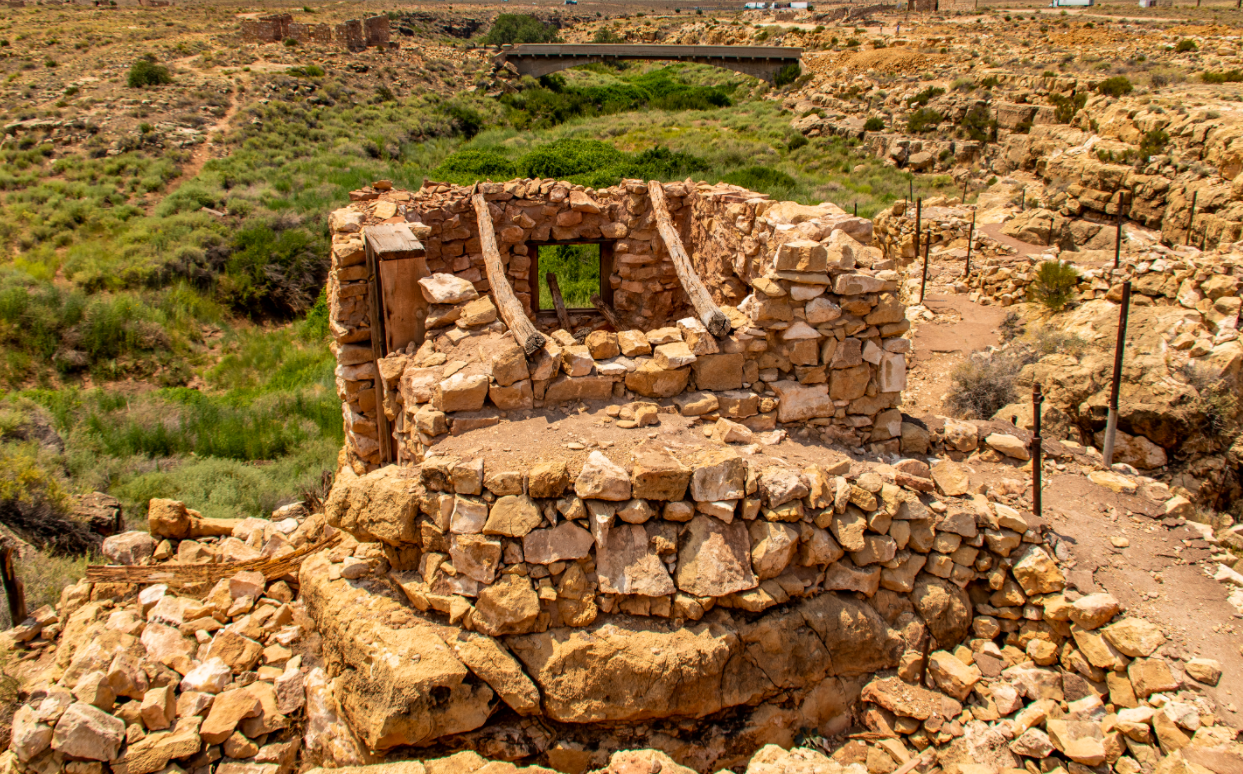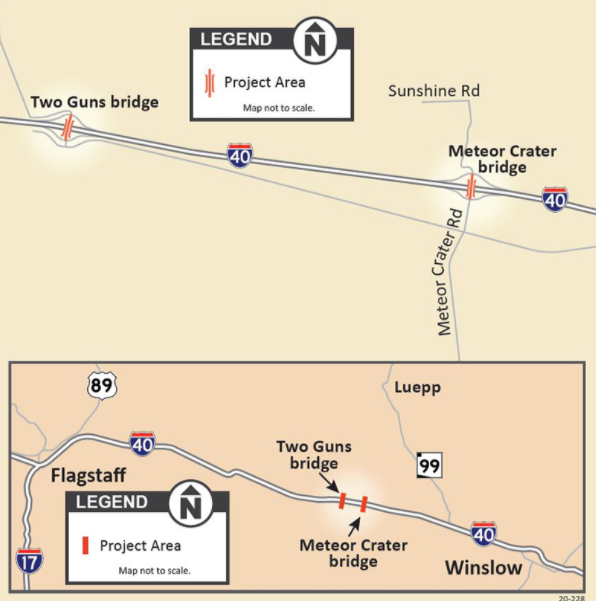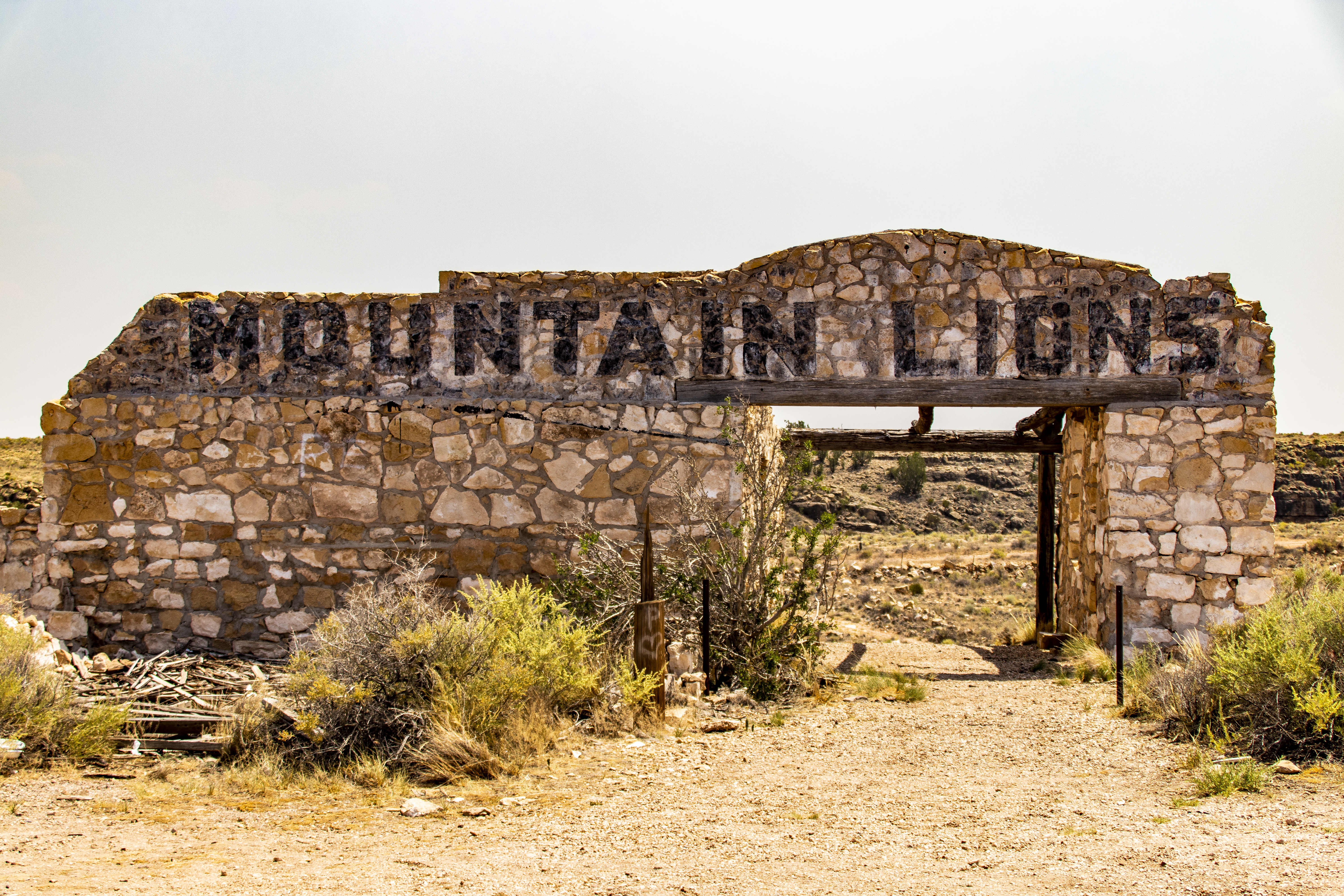Two Guns bridge connects outlaw past to new engineering
Two Guns bridge connects outlaw past to new engineering
Two Guns bridge connects outlaw past to new engineering
Two Guns bridge connects outlaw past to new engineering

If ever a name conjured up stories of former times and dastardly deeds, it’s Two Guns, an abandoned town on Interstate 40 with more tales of the Wild West than a saguaro cactus has needles.
Today, Two Guns is one of two locations along Interstate 40 east of Flagstaff where the Arizona Department of Transportation has launched a bridge rehabilitation project. Between there and just down the highway at Meteor Crater Road, the ambitious project will remove and replace both bridge decks. Other modernizations will include roadway embankment improvements, new guardrails, new barriers, and other tweaks to bring the bridges up to modern standards.
As good as these improvements will be, these emblems of engineering also serve as a bridge (pun intended) to mustier, sepia-toned times, times not only of colorful cowboys but also of earlier bridge projects that were, for their time, monuments to modernity.
That Two Guns has a thorny past is as much of an understatement as the phrase “dry heat.”
It starts with the so-called "Apache Death Cave" where it is said 42 Apache were massacred in 1878. The rival Navajo had gotten wind the Apache were using a cave to travel undetected and set up an ambush. You can still visit the Apache Death Cave today by using the Two Guns exit on I-40.
Another story goes that from 1879-80, Billy the Kid and other outlaws used the ruins of a stone house in Canyon Diablo, a chasm near Two Guns, as their hideout.

Another Canyon Diablo Bridge, this time built to handle the new-fangled automobile, opened to traffic in 1915. For a short time, this would even carry the Mother Road itself, US 66, until it was replaced by a more modern bridge built farther north on I-40 near, yep, you guessed it, Two Guns. You can still visit the original span today, which was added to the National Register of Historic Places in 1988.
Finally, as we told you about in another blog last year, perhaps the wildest denizen of Two Guns is the one who gave the community its name: entrepreneur, attraction operator, liar and murderer Henry "Chief Crazy Thunder" Miller.
From the relics of the Wild West outlaw days to modern I-40 and the current bridge getting a state-of-the-art makeover, a stop at Two Guns as you travel east from Flagstaff will definitely help bridge the past and the present.





